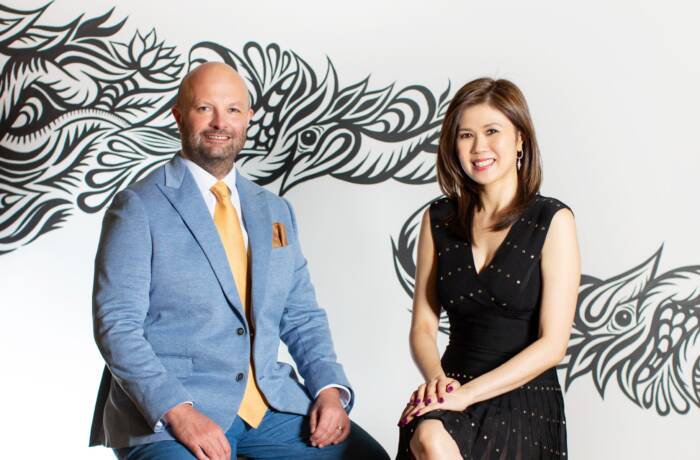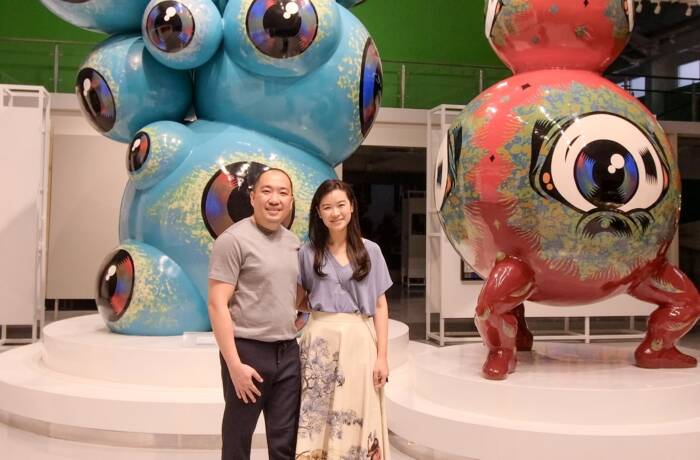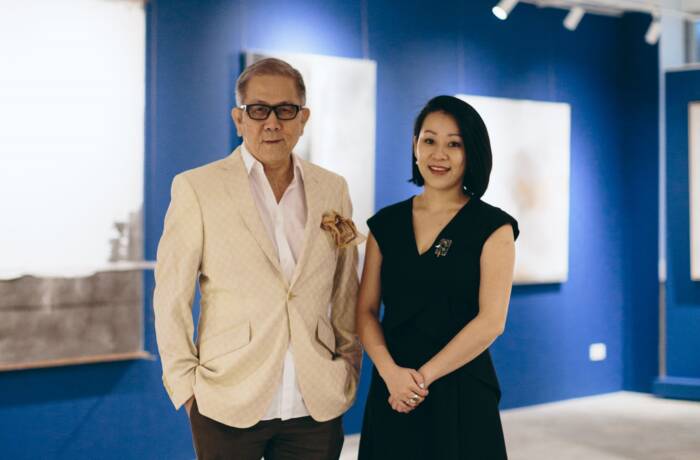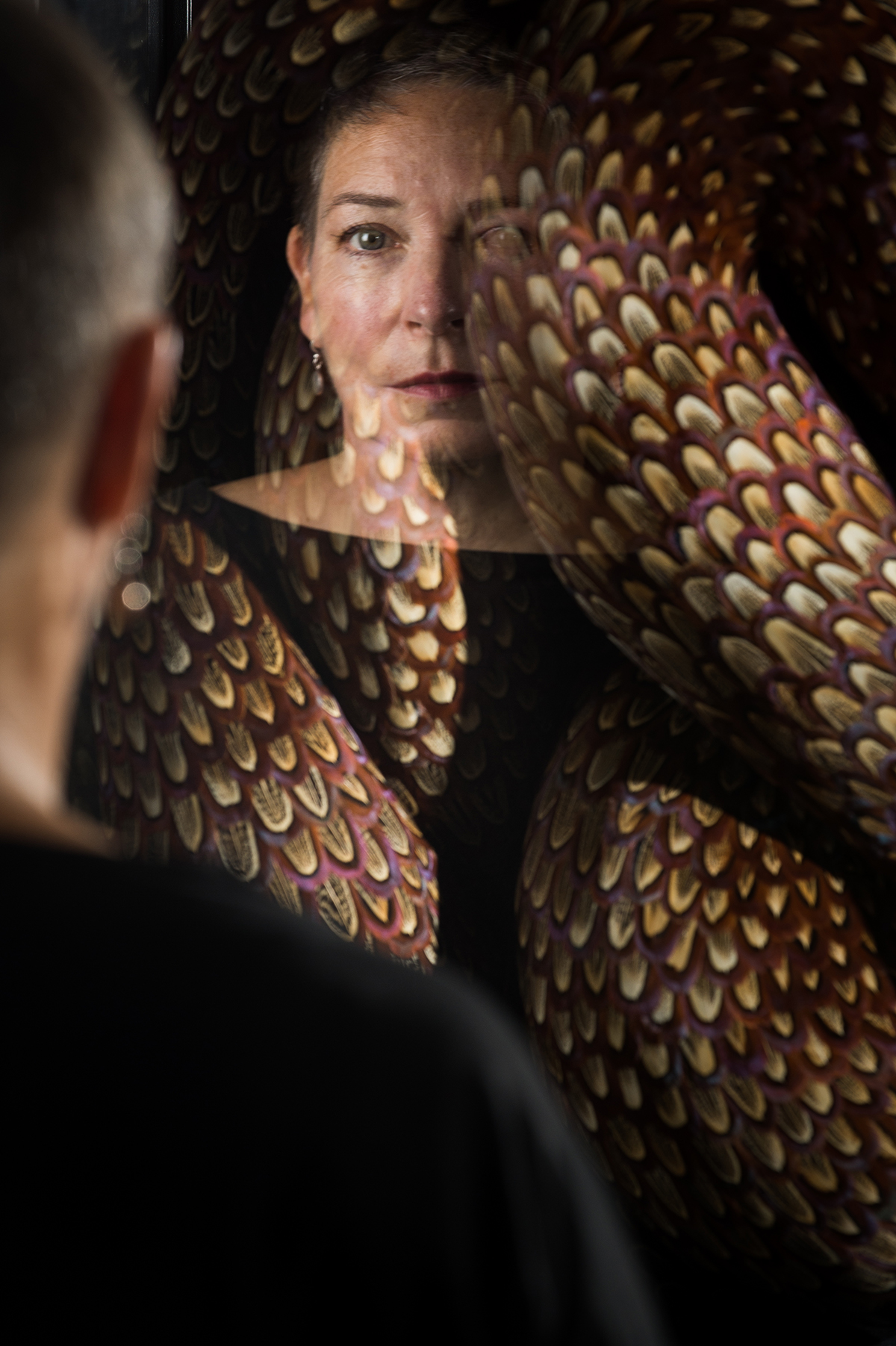 Kate MccGwire is a British artist whose childhood on the Norfolk Broads inspired her to create art around landscapes and wildlife. Often collaborating with fashion brands, MccGwire recently produced a limited edition scarf line with Co-Lab369. Here, Candice Tucker speaks with the artist about linking her nature focused art with the fashion world
Kate MccGwire is a British artist whose childhood on the Norfolk Broads inspired her to create art around landscapes and wildlife. Often collaborating with fashion brands, MccGwire recently produced a limited edition scarf line with Co-Lab369. Here, Candice Tucker speaks with the artist about linking her nature focused art with the fashion world
LUX: How did you initially get involved with Co-Lab369 and what do you admire about them as a brand?
Kate MccGwire: I met Michelle Lindup, the cofounder of Co-Lab369, about 10-15 years ago in Paris. She was a collector and she bought some of my work at an exhibition. We have stayed in touch and every time I go to Paris, we have lunch together and this discussion about scarves happened during one of those lunches, and it evolved over a period of time.
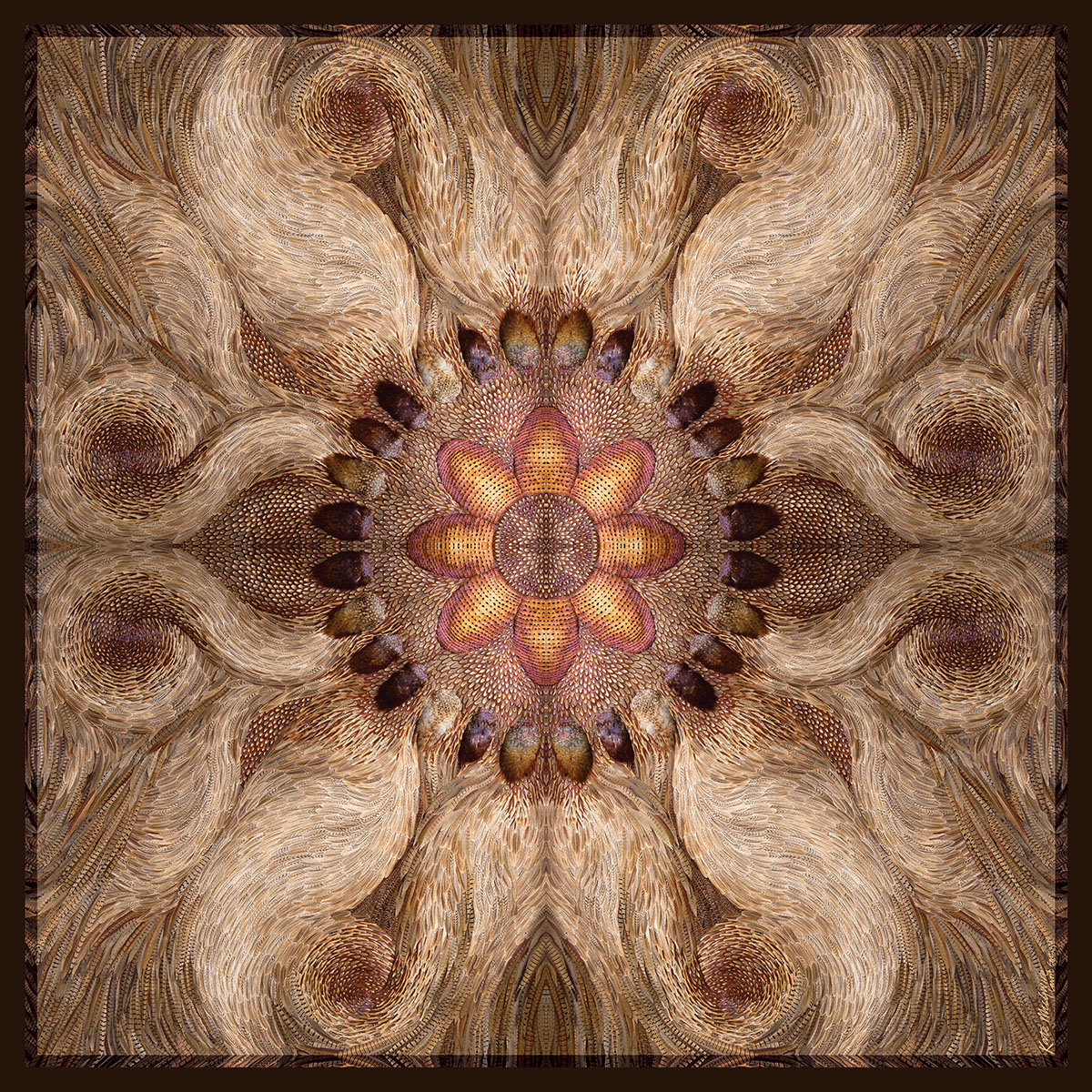
LUX: You’ve worked on many collaborative projects, from ESKMO, to Iris van Herpen to Helmut Lang. What do you enjoy about collaborative work, and how have you found your latest collaboration with Co-Lab369?
KM: It’s really interesting. It’s a very fine balance, trying to get that ethos straight and we’ve managed to do that. We have worked together for a quite a long time now putting it all together. It’s been a labour of love because Michelle has a really strong background in printed textiles and doing all the sampling, so that was her area of expertise, and my work translates really well into cloth and fabric. The quality of the silk is such a high standard that the lustra of the feathers really come out so it has been really exciting to see it come to life.
Follow LUX on Instagram: luxthemagazine
I did a project with Ann Demeulemeester, and my work was on their catwalk show in Paris in 2015 and one of my proudest moments was to see all of these garments which I had worked on, walking down the catwalk in the Palais de Tokyo; it was just such a pinch yourself moment.
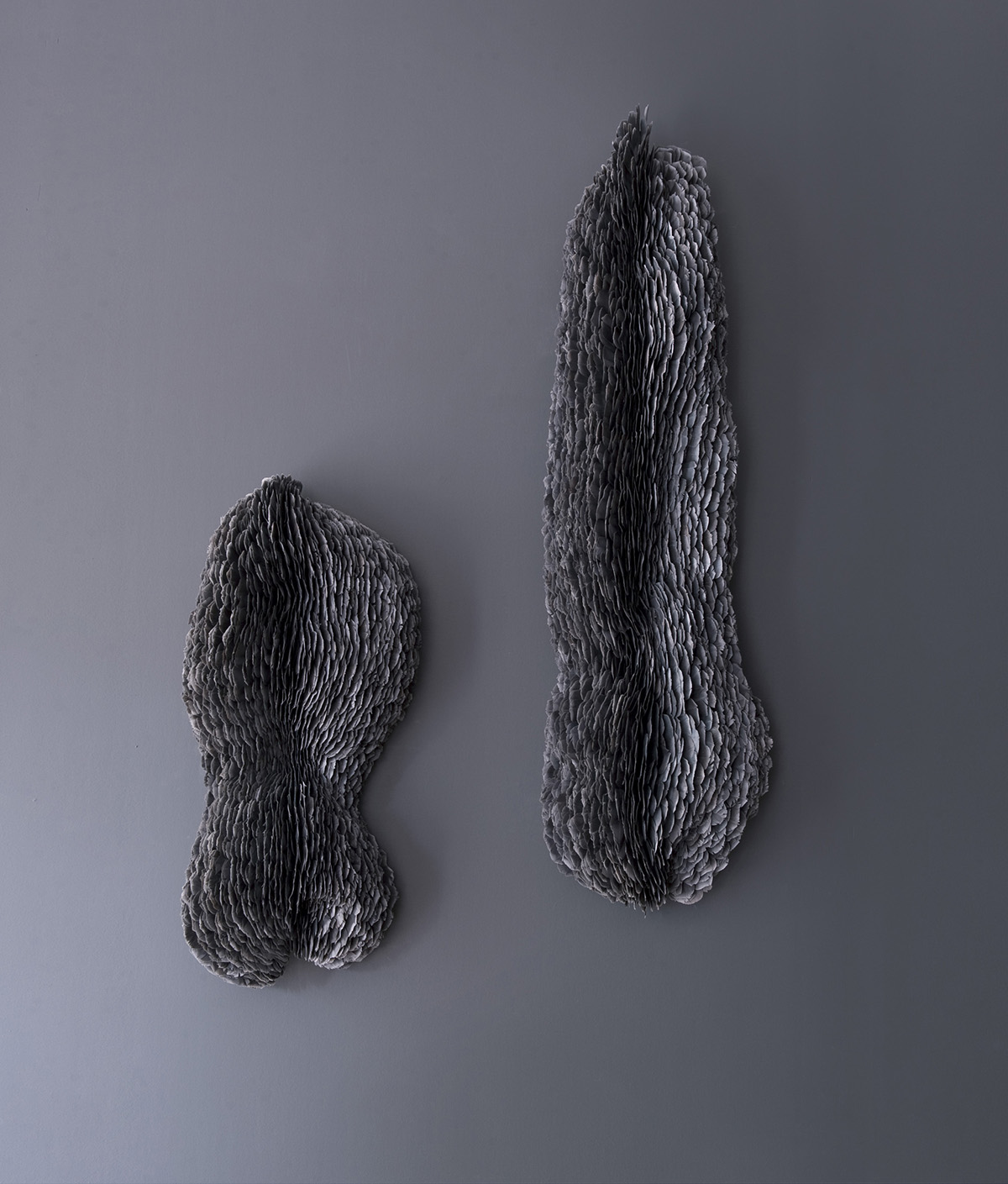
LUX: Do you ever find it challenging making sure your vision aligns with the fashion house?
KM: It is always a discussion. There are things I am not prepared to do, I don’t want to change the colours of the feathers, for example. They are all the original colours of the feathers that I work with, and nothing is dyed. I wouldn’t die any feather on my work as I wouldn’t want the colours not to be original to the bird which I think is important.
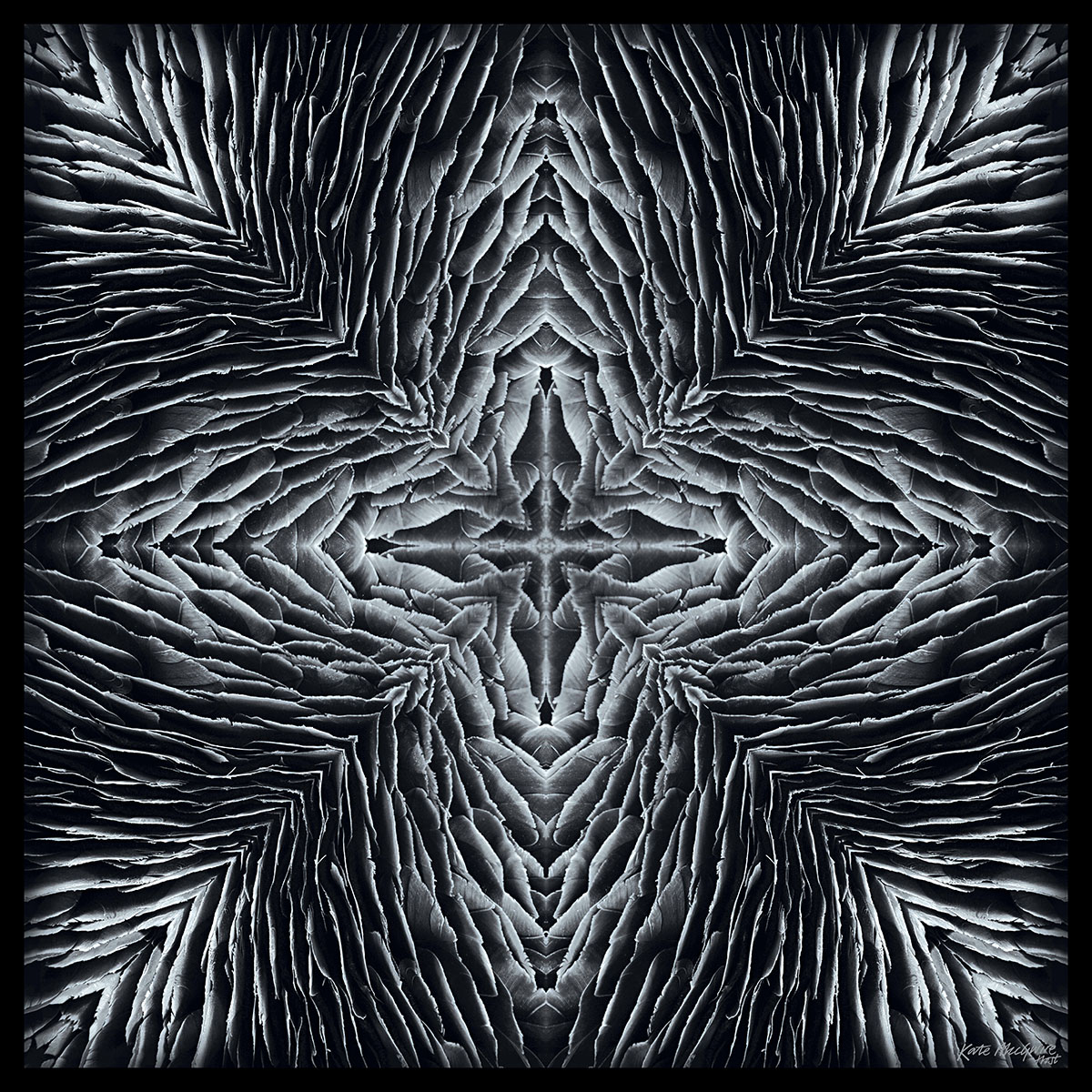
LUX: You work in many mediums – from sculpture to film to drawing. How have you found incorporating fashion into your work?
KM: I love fashion. I am not a fashionista at all, but I really admire it. The thing I don’t like about fashion is it’s so seasonal. I like to buy something that lasts and is an iconic piece, like the dress I’m wearing now, an Issey Miyake dress. I know that it will be good for years, and I think that about the scarf. It’s not a seasonal thing, it’s not the seasons colour, it’s nature’s colour, it’s not going to go out of fashion, it is a limited edition beautiful aesthetic piece that will last for years.
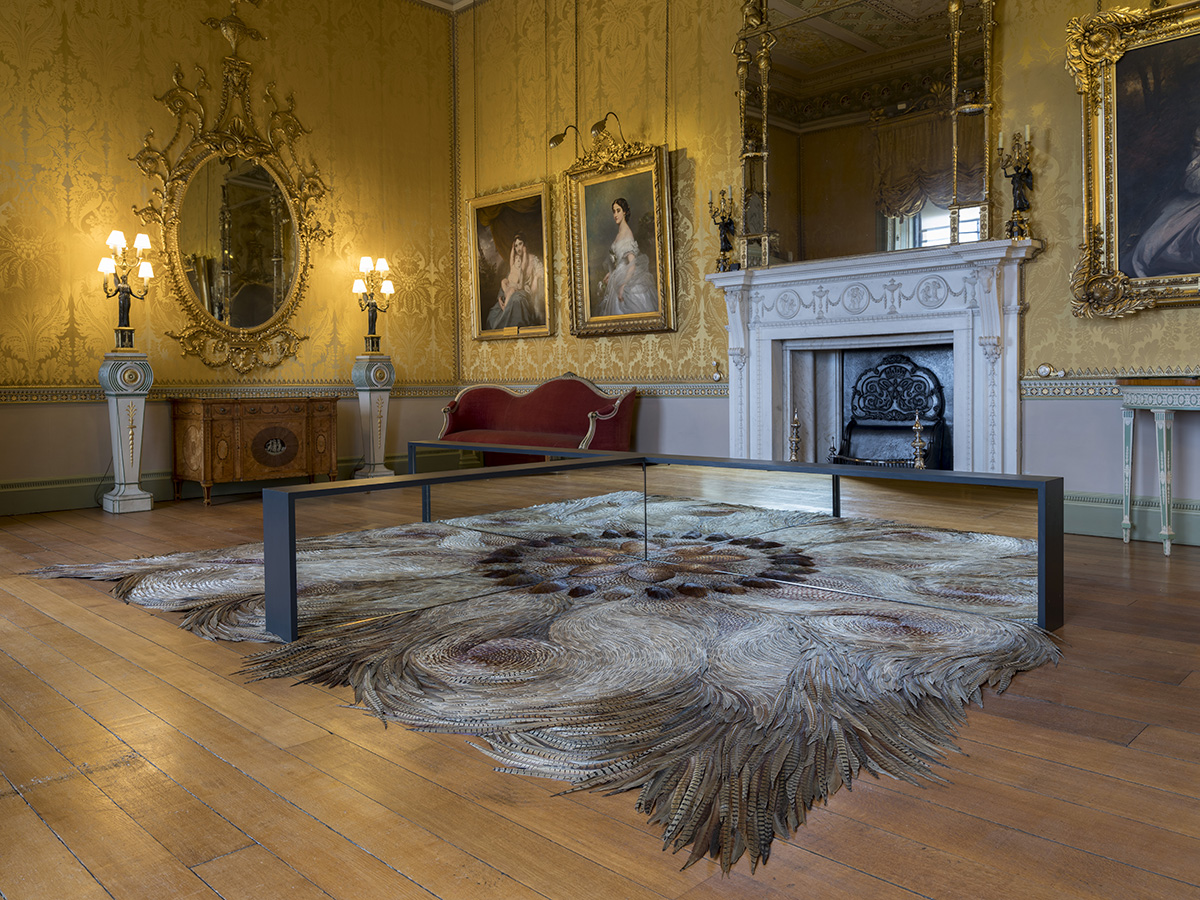
There are a very small numbers of scarves. For some of them there are only 50 and for others, 200. It’s early days and at the moment, it’s a very small unique range. Someone who wants to buy one from me has already said “I want to frame it”. My work is very labour intensive and therefore quite expensive so it’s a way for people who love my work, to having something, enjoy the work, but not having to spend so much.
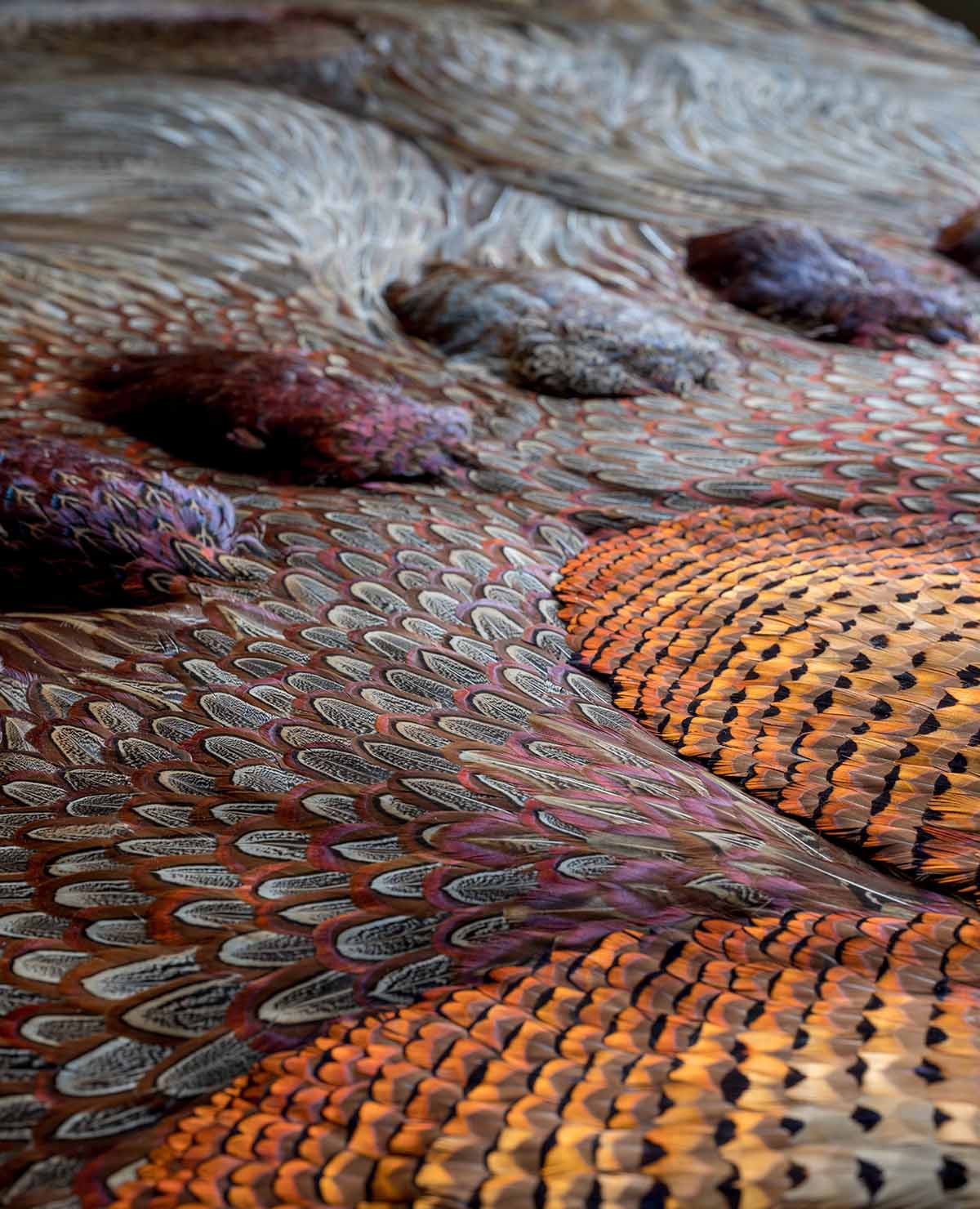
LUX: How do you feel about people wearing your art, and would you say that performance, or wearable, art is of particular importance now?
KM: I’m rather subversive in the fact that I love the idea of people wearing something they regard as ‘rats with wings’, pigeons, around their neck. It tickles my humour that that is a possibility, that you can transform someone’s opinion of something being disgusting to something beautiful.
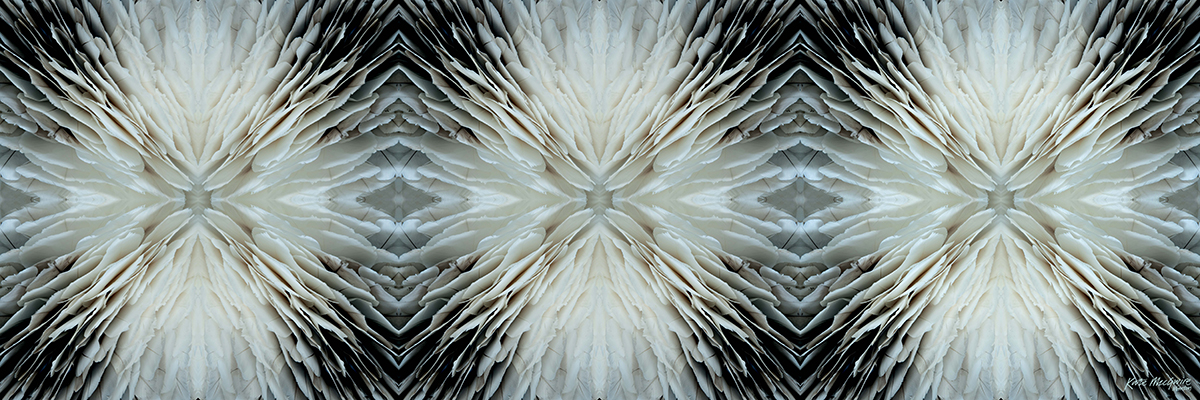
LUX: The feather is something that features beautifully across your works. Why the feather?
KM: The feather is iconic. If you have a white feather, it is a symbol of defeat. Kids will pick up a feather and they will be Hiawatha, it’s a transformative object and they provide warmth and flight, and it also has a method of attraction and that all ties in with what we do to adorn ourselves, in fashion. The feathers do that to the bird; they attract a mate with their various colours.
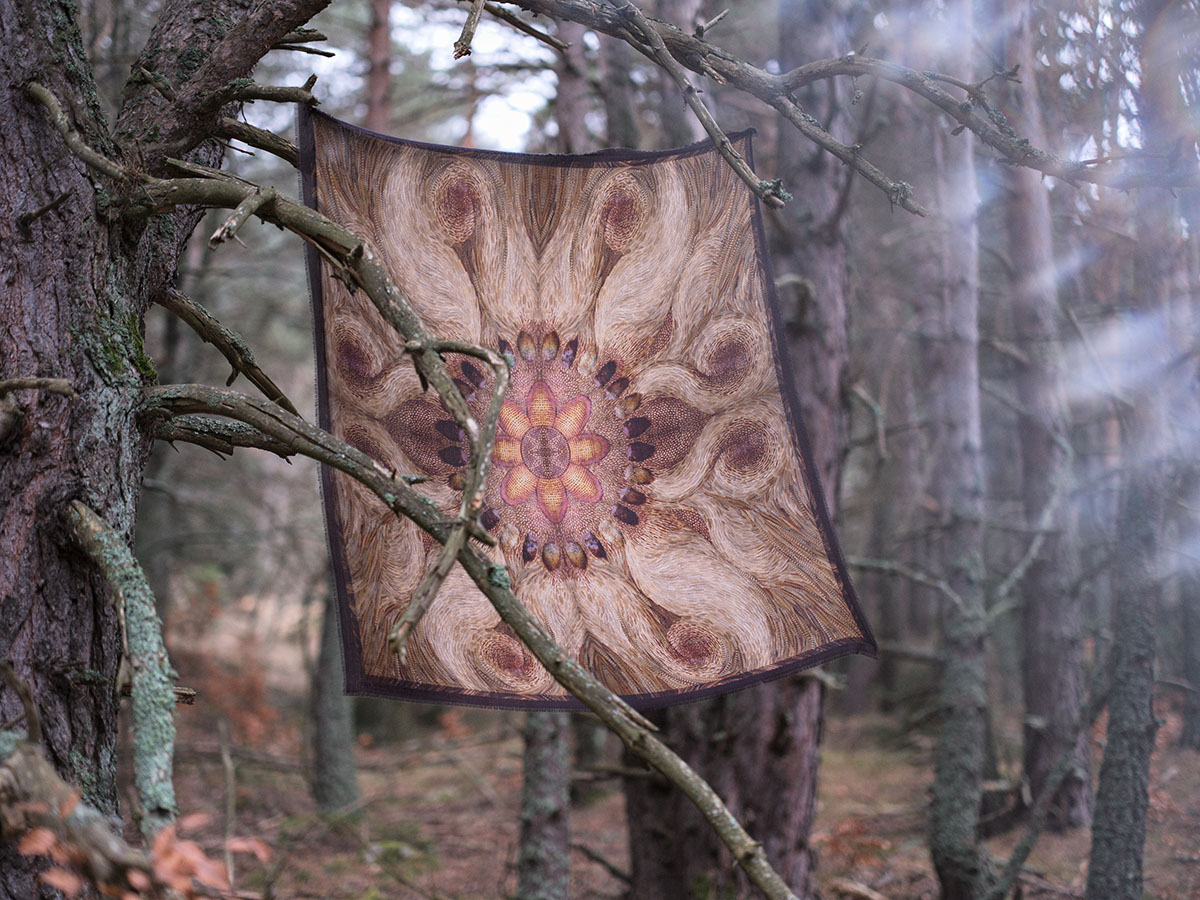
LUX: In what ways does your art draw inspiration from, and connect, your current life and your childhood in Norfolk?
KM: My family had a boat, not a very smart boat, but every weekend we would go away on this boat and we would travel at reed height across very quiet waterways and I would be the one spotting the Bittern and the Marsh Harrier, like a tiny little vole or an otter if we were lucky and kingfishers if we were very lucky. Now, I live on the Thames, at Weybridge, and I see a kingfisher every single day and I feel like I could never leave that house because that’s such a special thing.
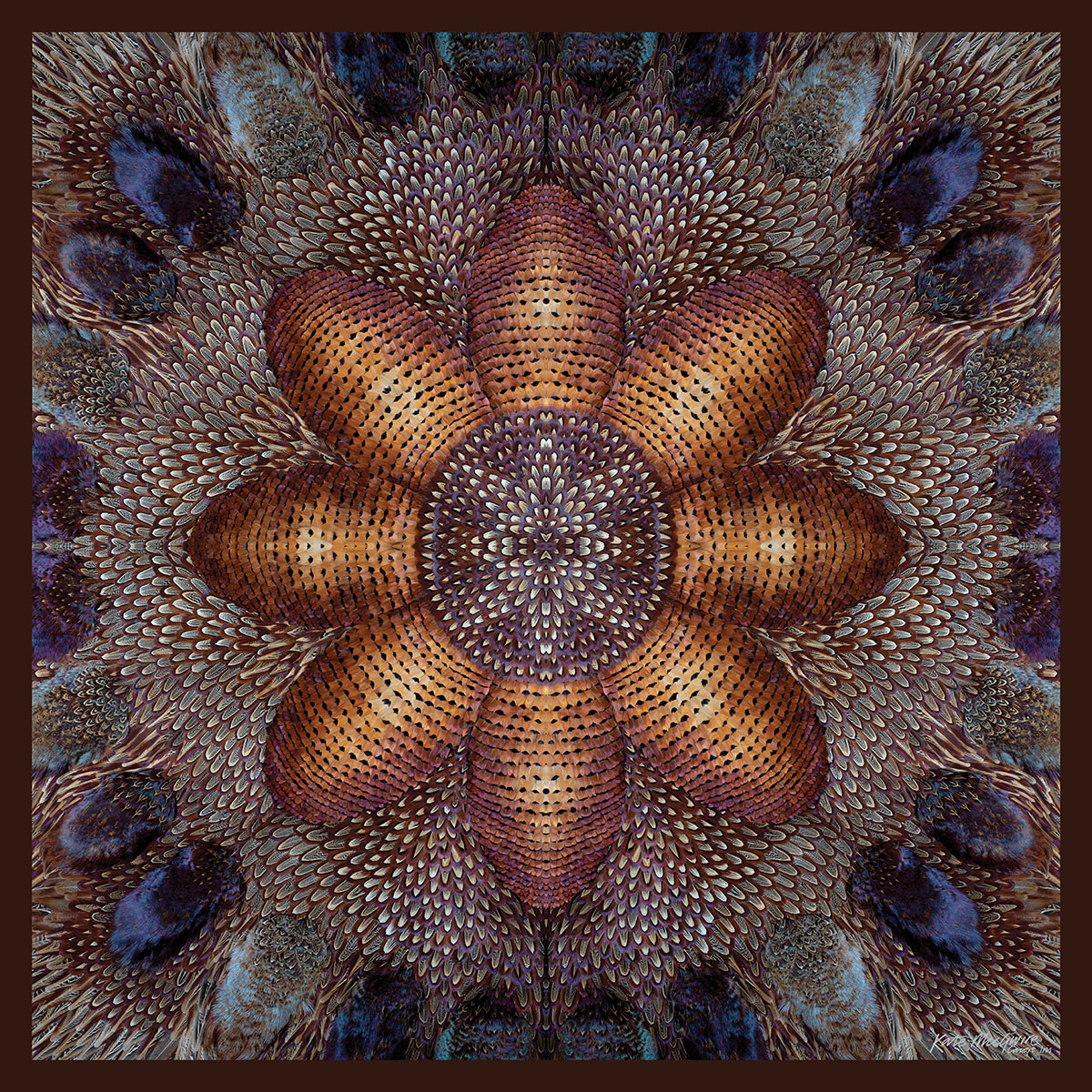
LUX: How do you incorporate sustainability into your work?
KM: My work is made with sustainable materials, they last a long time, although they are very delicate, provided they are looked after very well. We try and use recycled packaging; we are very conscious of that. We don’t use bubble wrap. We try and wrap as carefully as we can but it’s very difficult because the moment a piece leaves the studio it’s very difficult to insist things are done in the way you would do them in your studio, but we try.
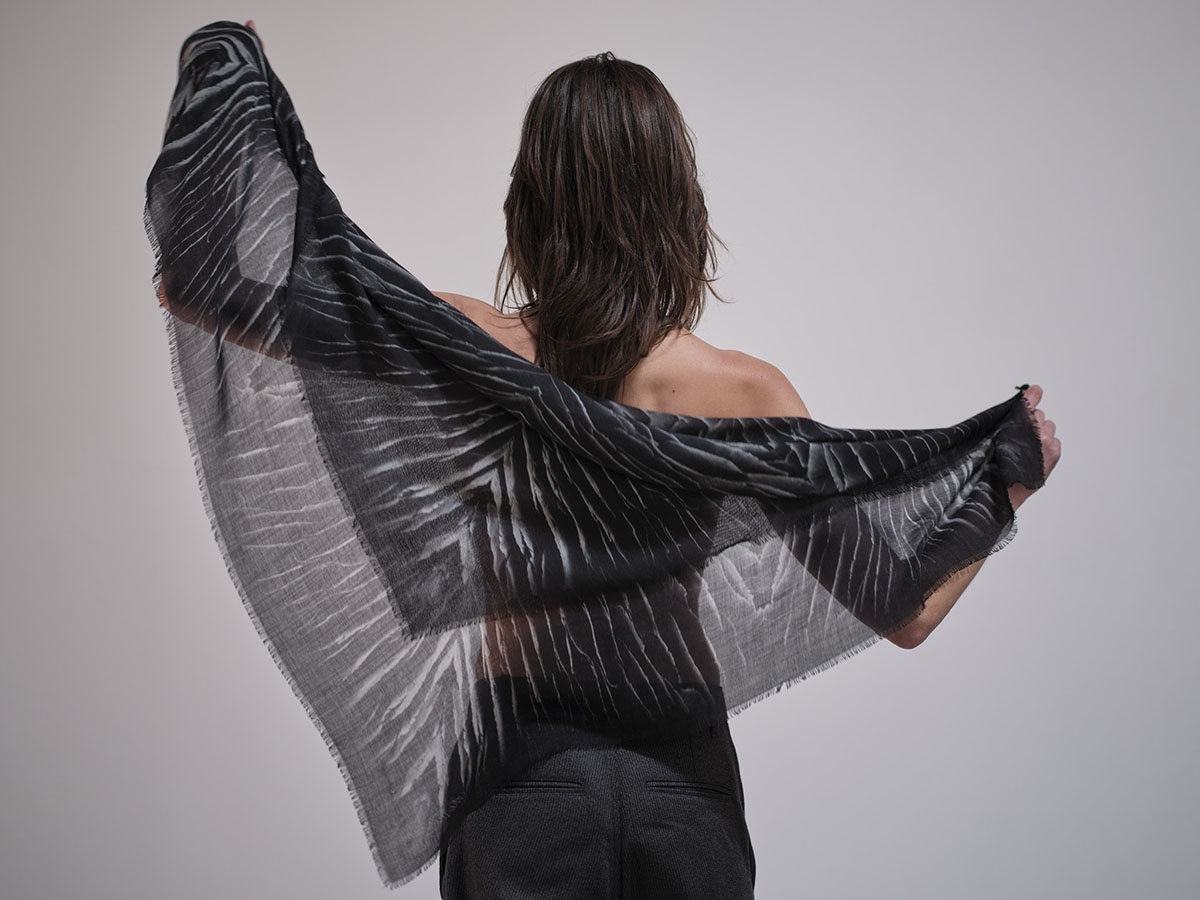
LUX: Do you think contemporary art holds a political or fundamental duty to contribute to sustainable changes?
KM: I think so. Going to art shows and seeing them put down a carpet on a Monday and take it up on Sunday and put it in a bin is terrible. If they organised themselves properly they could find a homeless charity and they could use the carpet for 20-15 homes, but they don’t do that; they put it in the bin. Everyone has a duty. Art is a glamourous world, so some people aren’t interested in it.
Read more: Millie Jason Foster on supporting female artists
LUX: What next? Will you return to sculpture or continue in wearable mediums?
KM: Of course, this is very much a tiny fraction of my practice. I have an exhibition opening at the end of this month with Iris van Herpen and she has selected my work to go along with her grand retrospective. I also have work going to Miami at the Untitled Art Fair, with a two-person booth there with Galerie Les Filles du Calvaire, I have loads of commissions and working very hard.
Find out more: katemccgwire.com

